- Home |
- Search Results |
- 16 stunning Victorian textiles from The Dress Diary of Mrs Anne Sykes
16 stunning Victorian textiles from The Dress Diary of Mrs Anne Sykes
Fashion historian Kate Strasdin reveals what the pages from one woman’s fabric scrapbook tell us about the Victorian era.
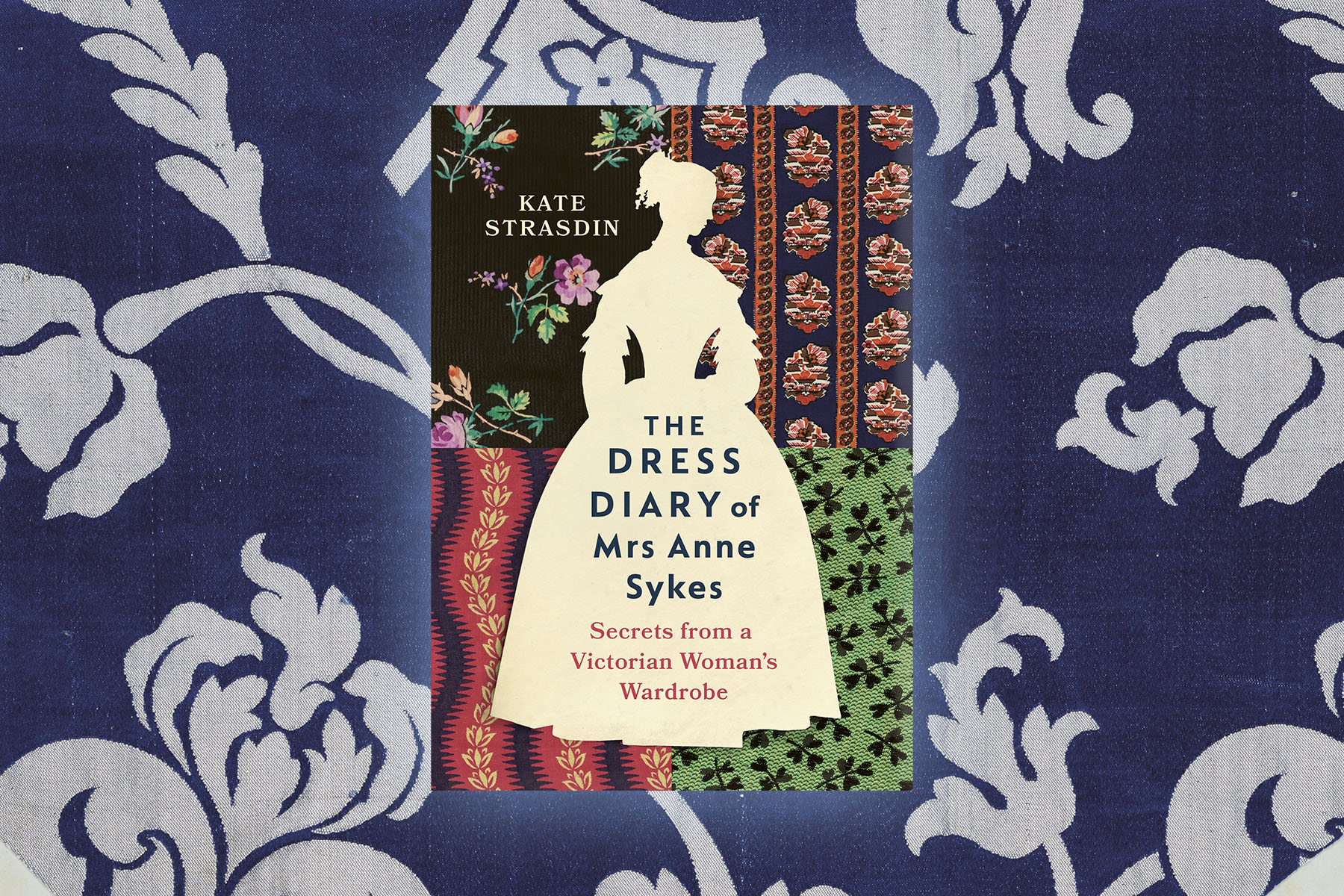
The dress diary kept by Anne Sykes in the middle of the 19th Century is a visual treat. Sixteen of the diary’s pages feature in my book, offering a snapshot of the world that Anne captured in her album, but there are so many more. It is wonderful, then, to be able to share another sixteen striking pages to give a further glimpse of the secrets within...
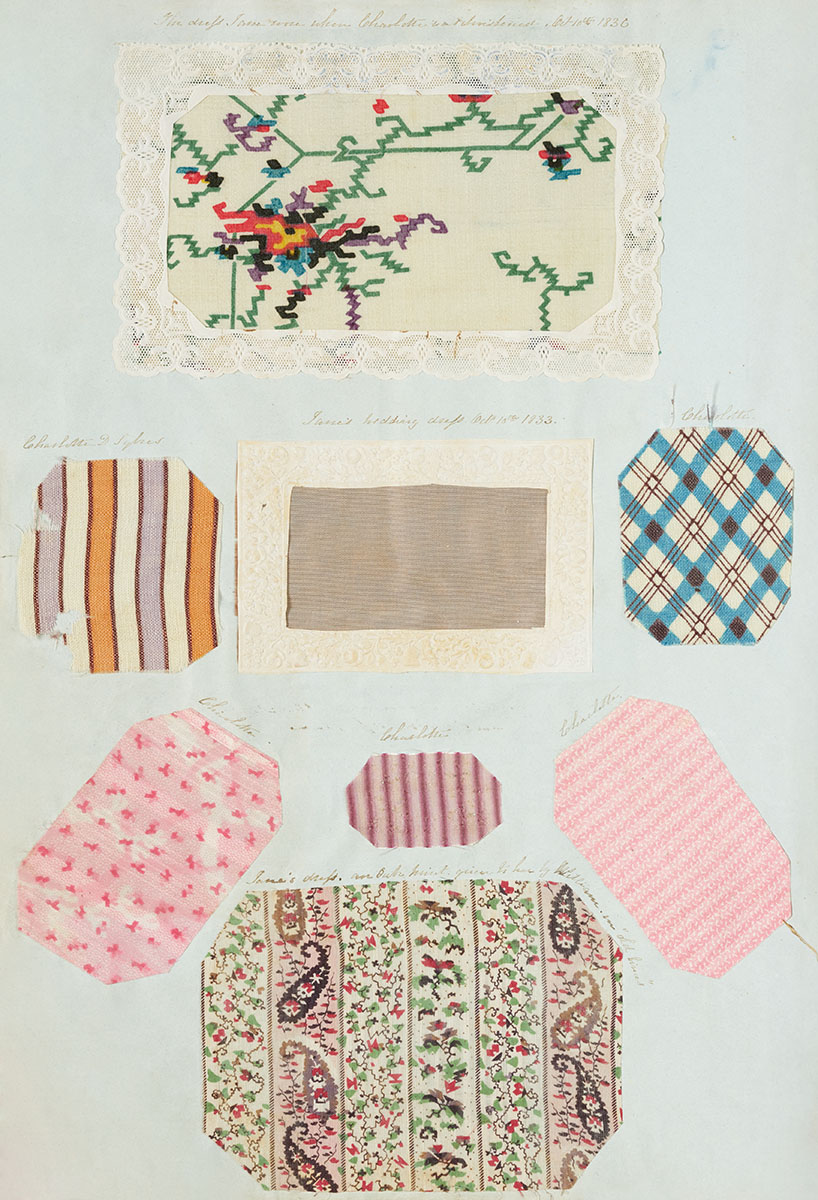
The sharp geometric swatch at the top of this page was worn by Anne’s sister-in-law, Jane Sykes, in 1836 for her daughter’s christening. It sits above the pale lilac of Jane’s wedding dress and is surrounded by Charlotte’s childhood frocks.
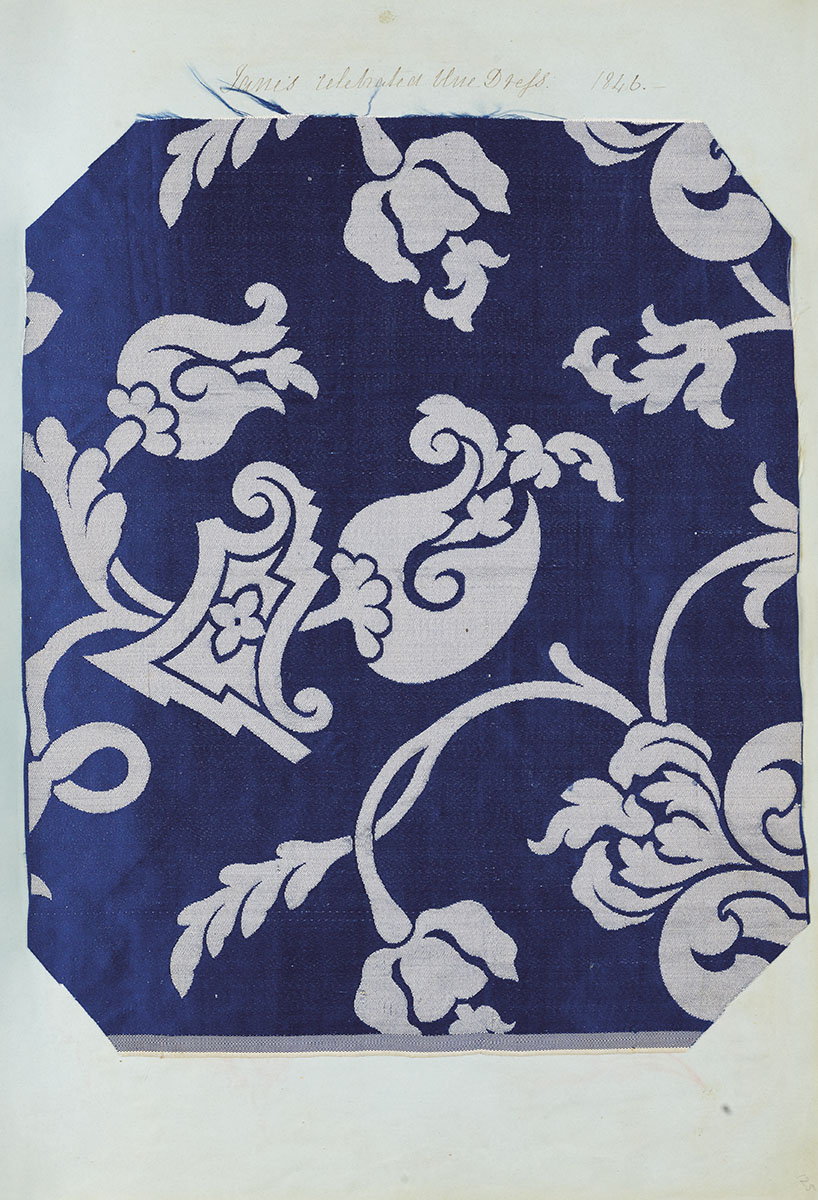
A bright, bold blue dominates the whole page with ‘Jane’s celebrated blue dress’ from 1846. Why it was such a celebrated dress we will never know, but Anne’s inclusion of it, along with the caption, signifies a memorable garment.
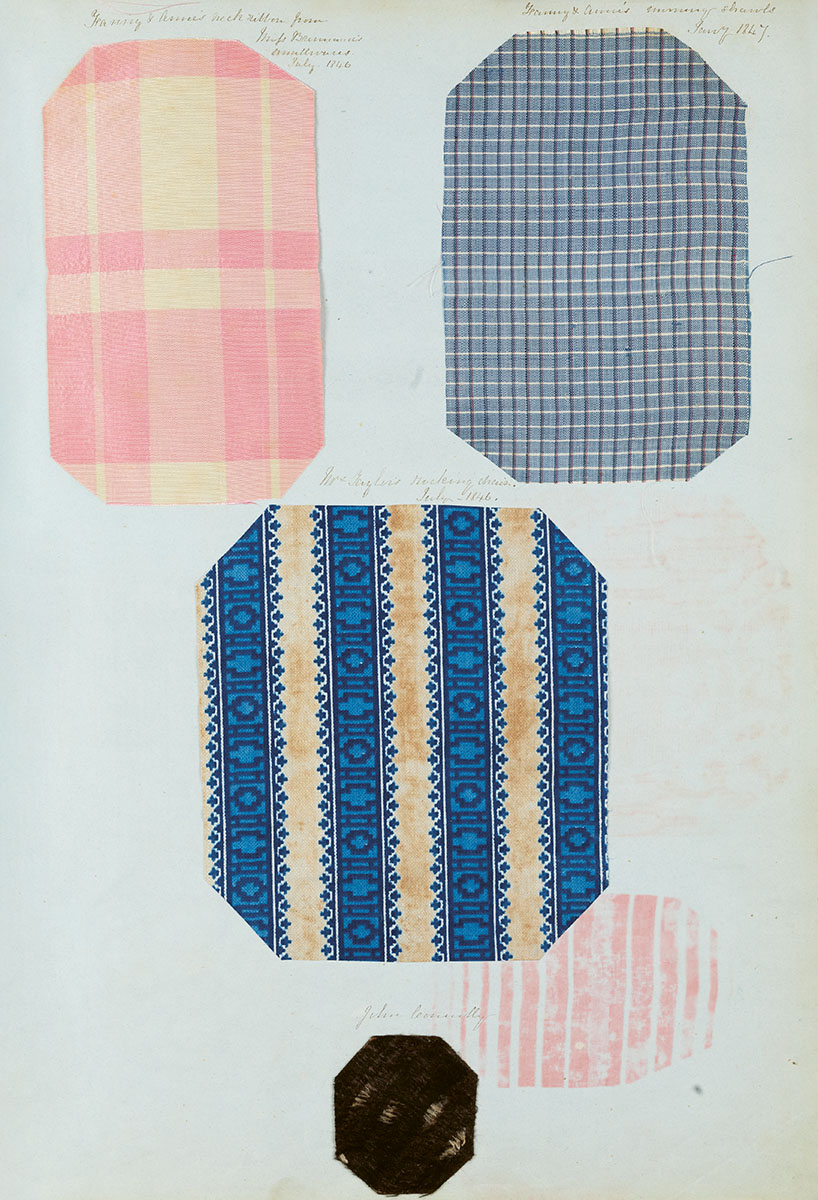
A snapshot of domesticity is captured by Anne on this page. The four swatches include neck ribbons worn by Anne and Fanny, morning shawls and the fabric chosen to cover Mrs Taylor’s rocking chair.
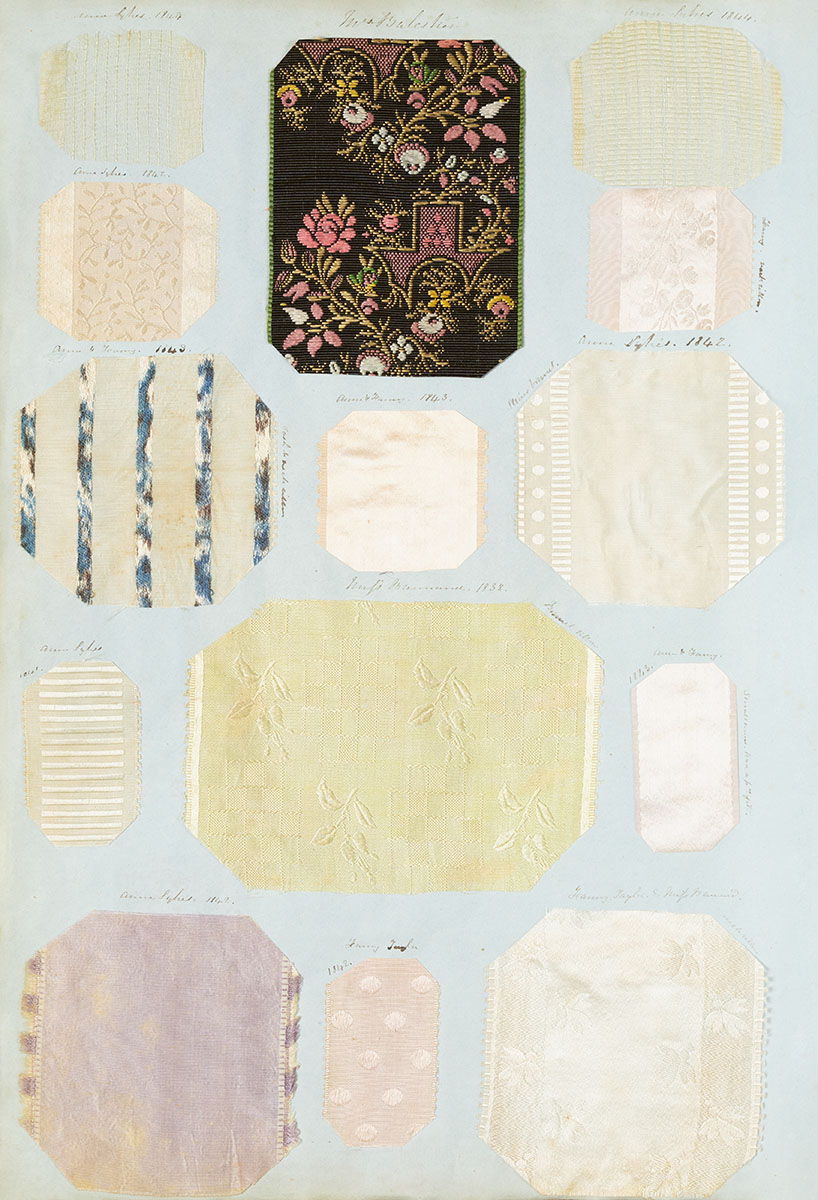
Across fourteen different samples on a single page, Anne captures a slice of her life in Singapore. Cottons and silks are captioned with the names of her friends in the settlement – Mrs Balestier, Fanny Taylor and Miss Brennand. Ribbons of friendship abound.
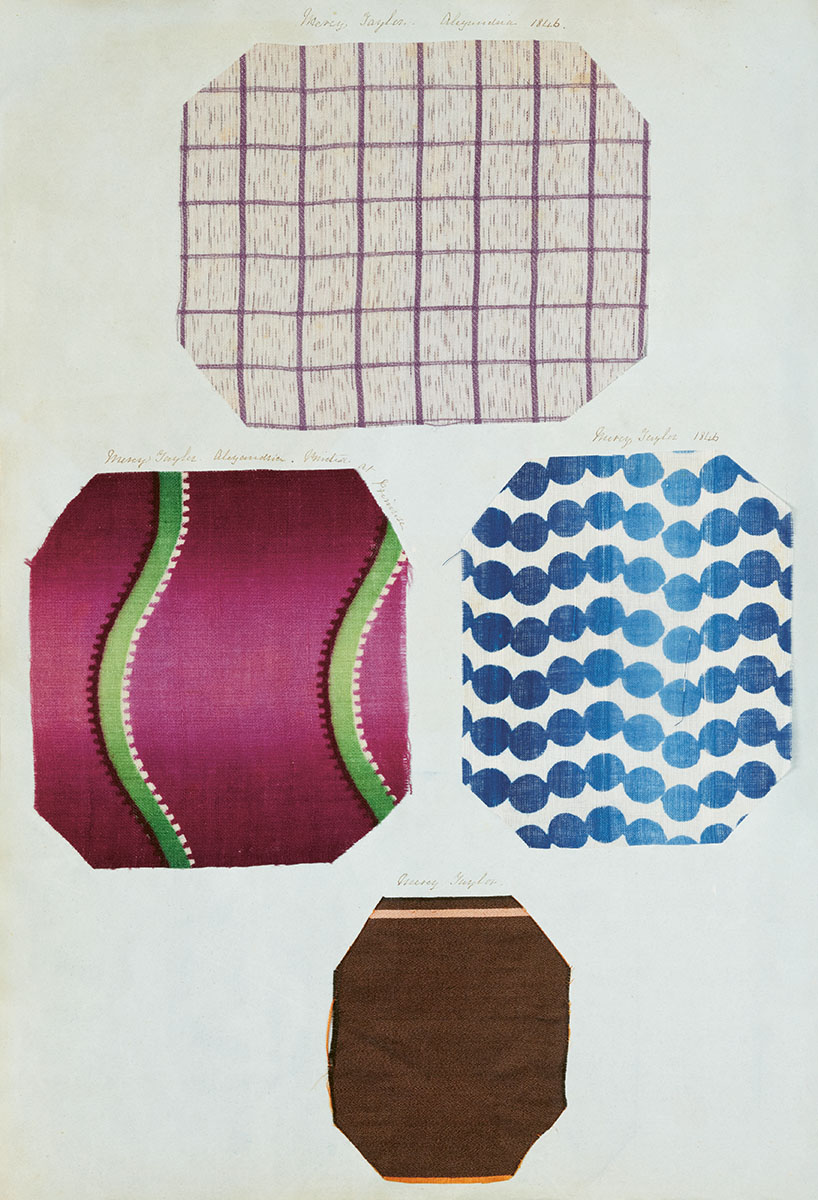
The complexity of printed cottons is illustrated in garments that belonged to Mercy Taylor: vibrant shades that appear curiously modern despite being created almost two centuries ago.
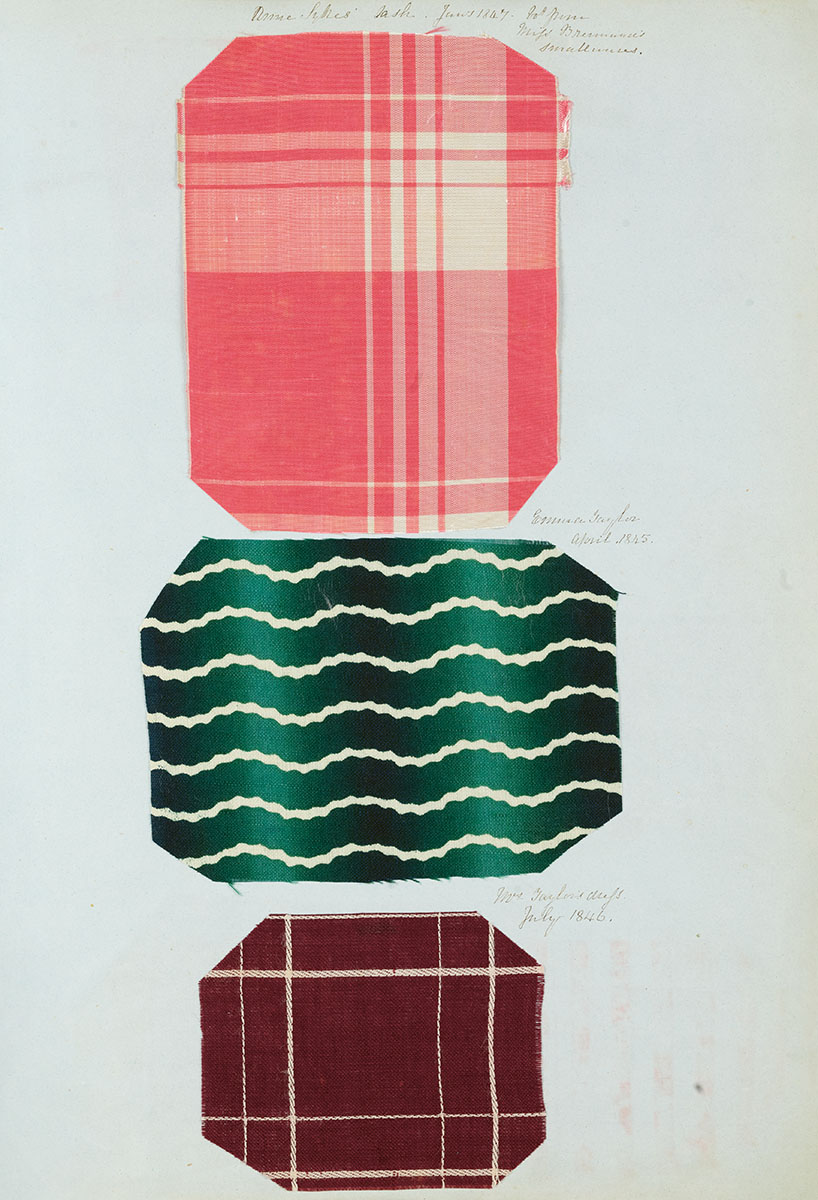
Anne bought this bright pink check sash from Miss Brennand’s smallwares shop in 1847 – one of her later purchases during her time in Singapore. The three swatches form a bright panel in pink, green and brown.
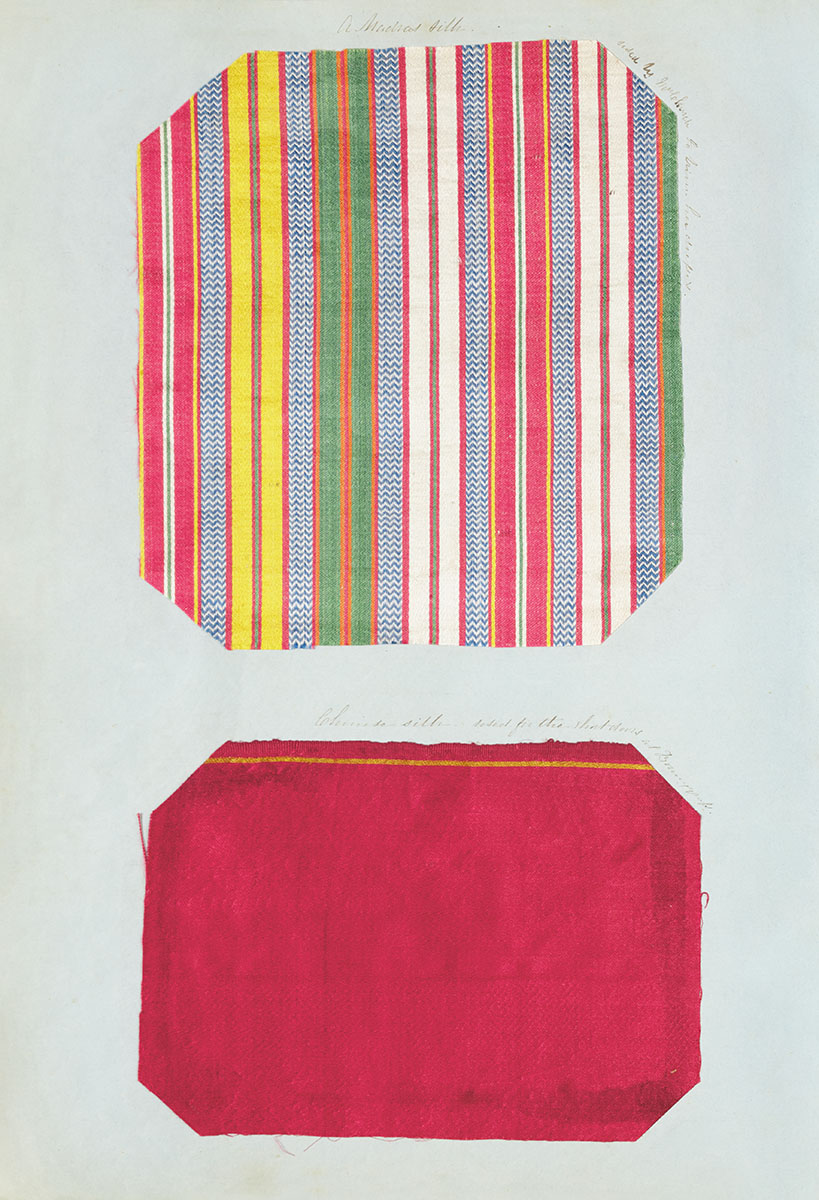
Two large samples of bright silk that attest to the variety of Anne’s life in Singapore. She had access to the merchant cargo that would have included bolts of silk from India and China, fragments of which she included here.
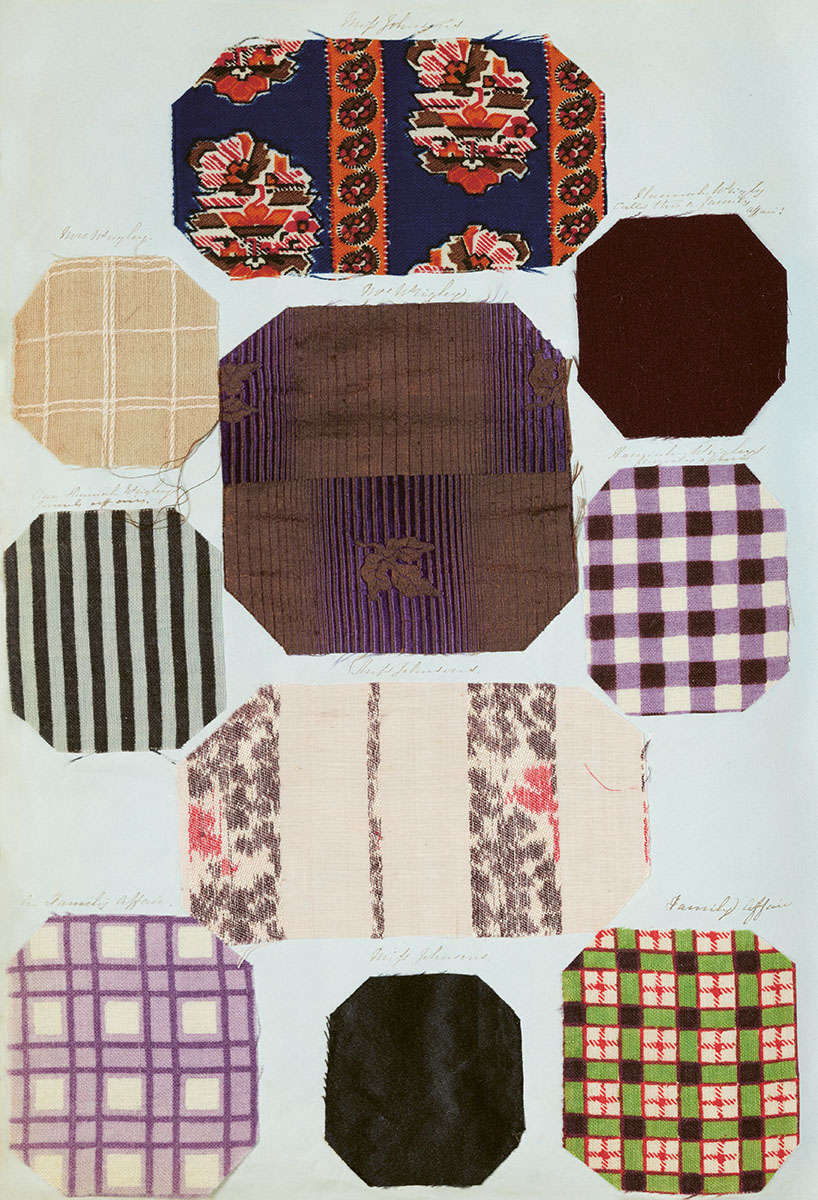
Many swatches belonging to Hannah Wrigley are arranged in a dense pattern. Some are labelled ‘a family affair’, a private joke that might refer to garments handed down to family members or more relaxed clothes for domestic spaces.
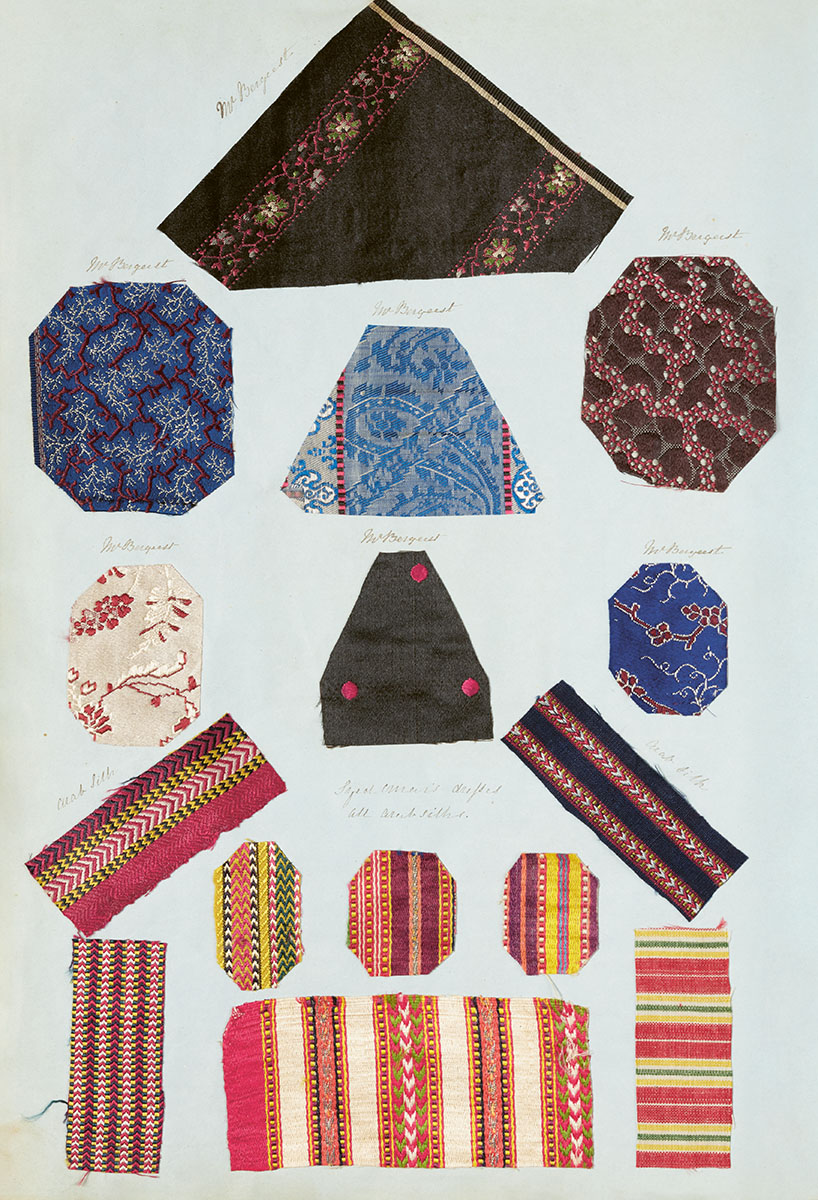
Syed Omar was a merchant trading out of Singapore and an associate of Adam Sykes. This display of Arab silks, as captioned by Anne, came from him. They are displayed beneath the colourful waistcoats of another merchant, Mr Bergeest.
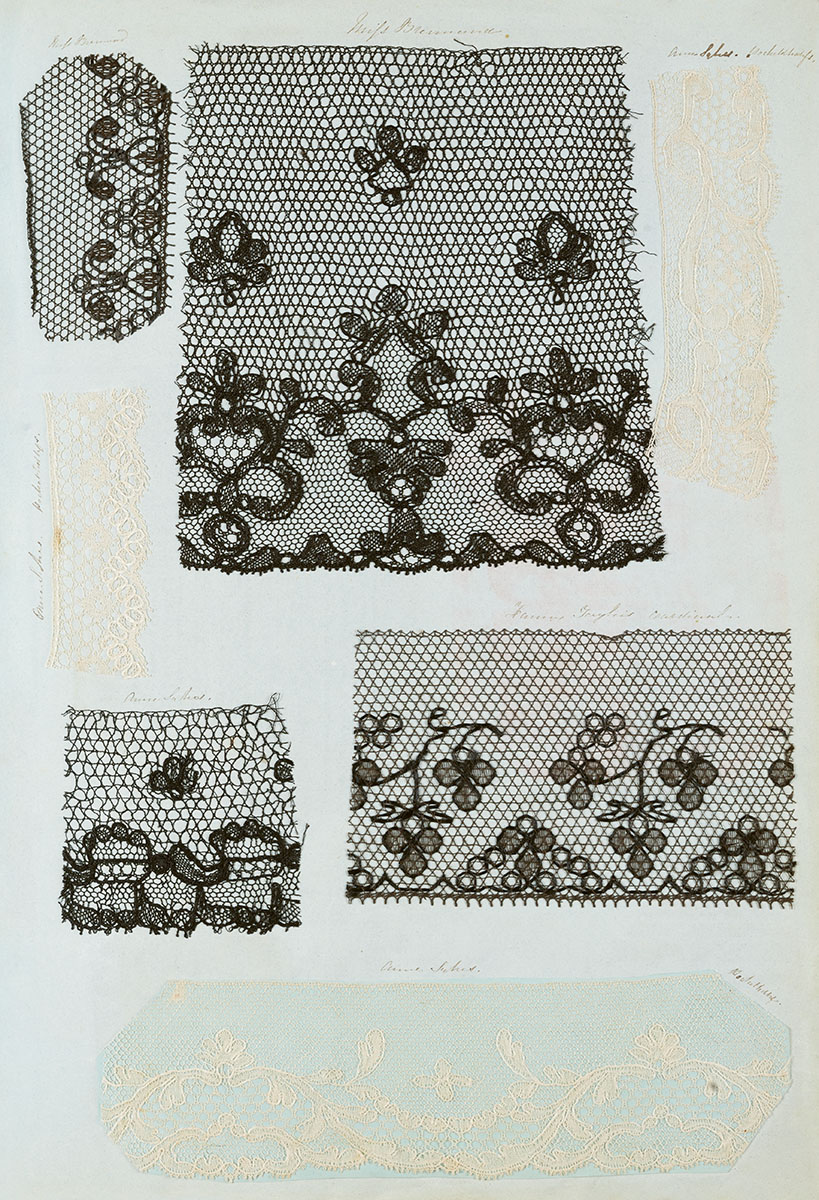
A mix of black and white laces, including some broader flounces and some narrower trims. Lace was an important decorative fabric throughout the nineteenth century – and it’s where my own journey towards Anne Sykes began.
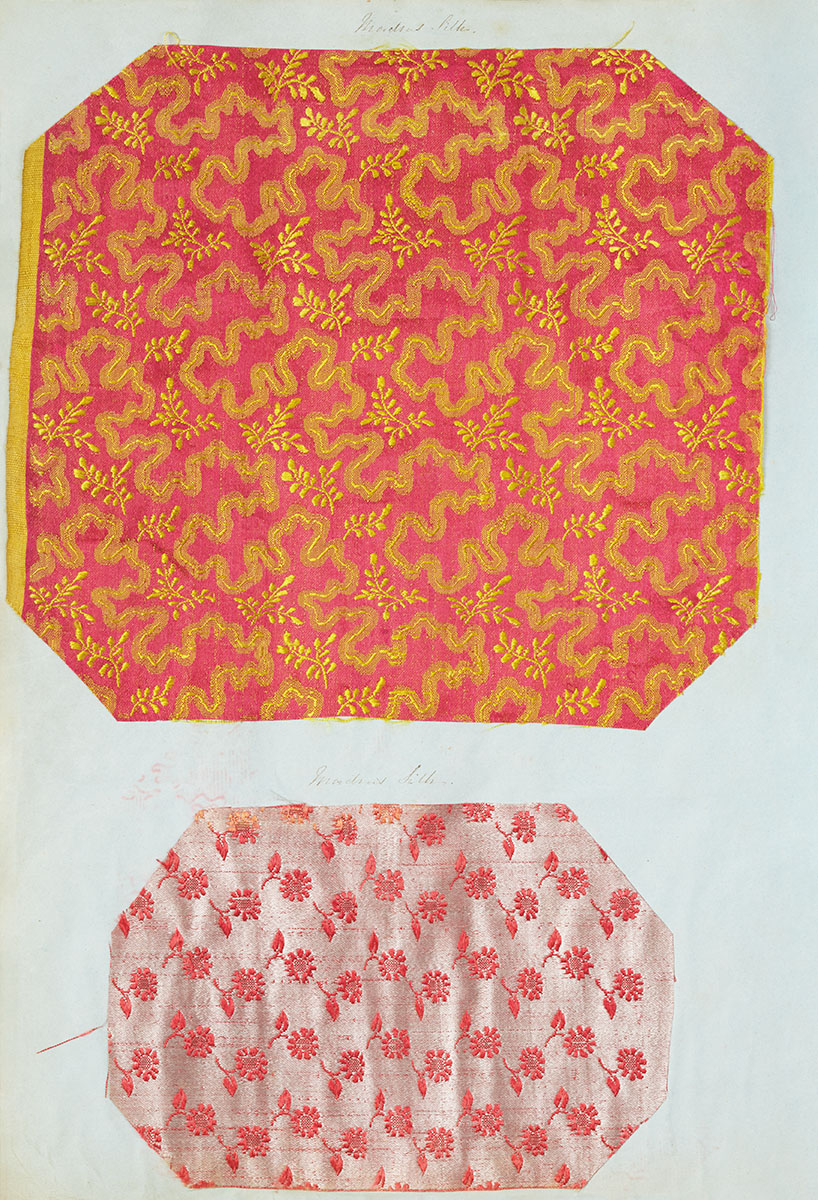
Two more examples of the international fabrics included by Anne in the album, charting her the materials that crossed her path in Singapore.
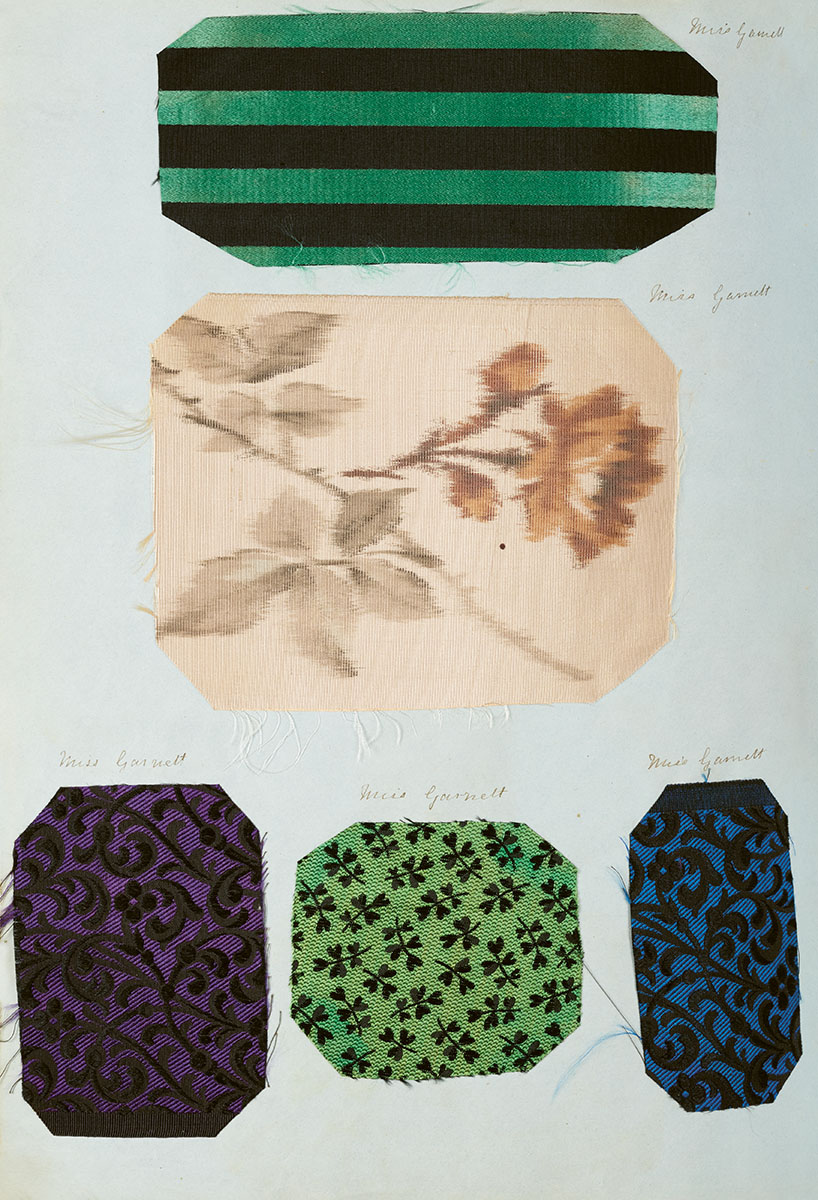
Miss Garnett is an unknown figure in the album. A number of pages include her name but there is nothing else to suggest her connection to Anne. Fittingly, her fabric choices were jewel-like. Who was Miss Garnett in her bright silk dresses?
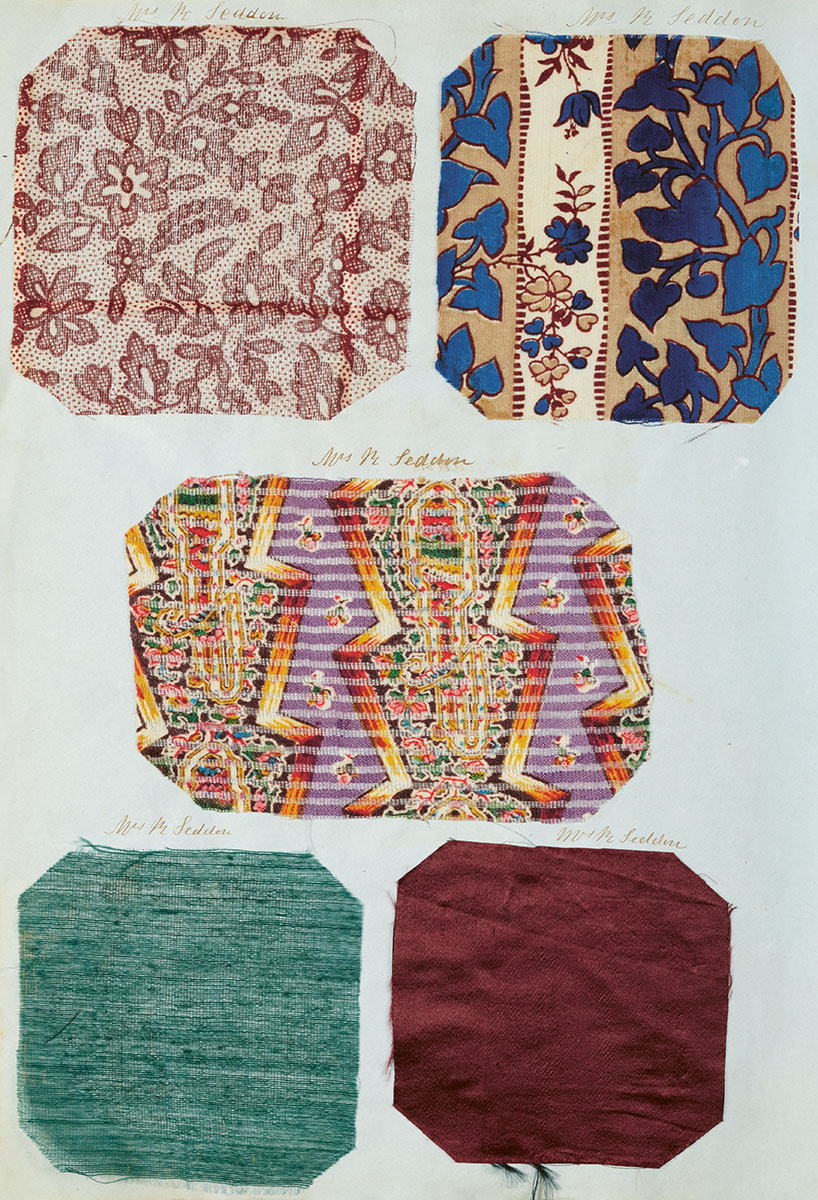
Mrs Seddon is another person whose name proved untraceable but whose wardrobe leaps from the page. Hers was especially bright, including a zig zag printed gauze that is almost psychedelic.
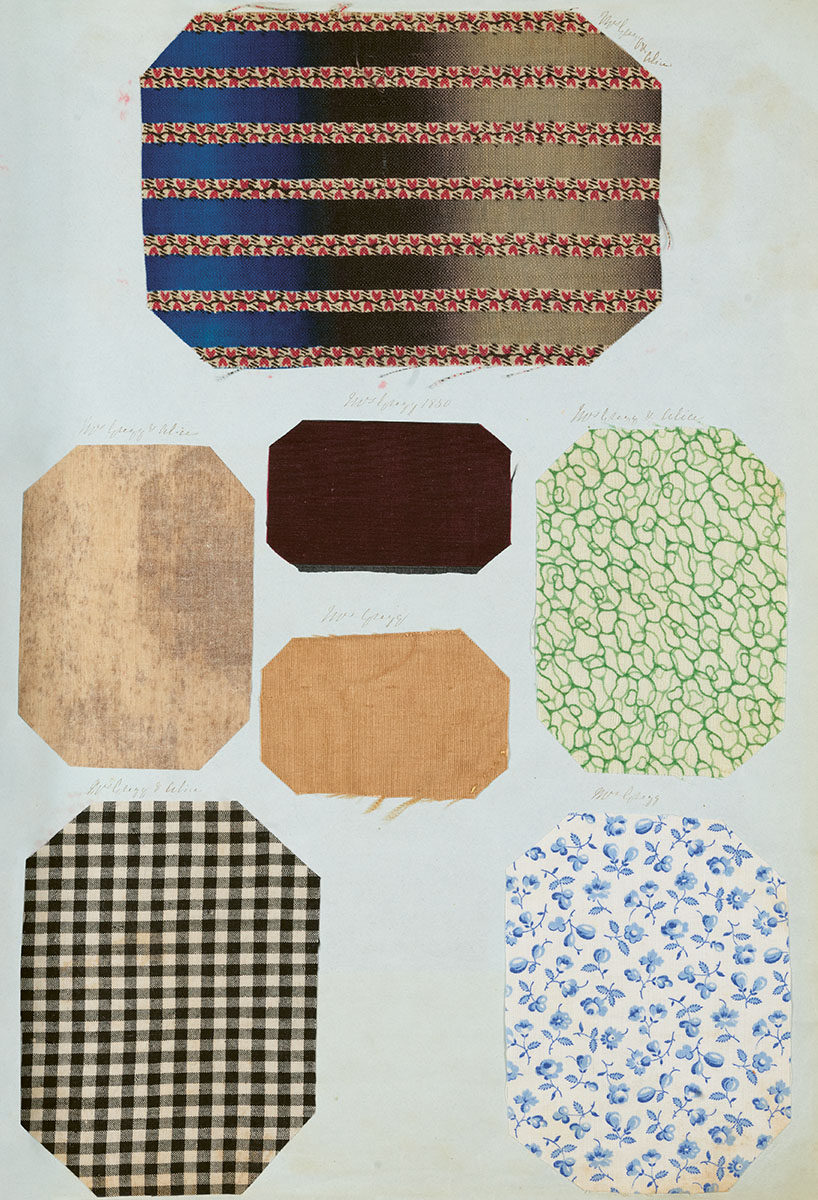
Anne’s relations from home sent her a variety of materials from their own wardrobes. Here Mrs Gregg and Alice Burton are featured with florals, stripes and checks.
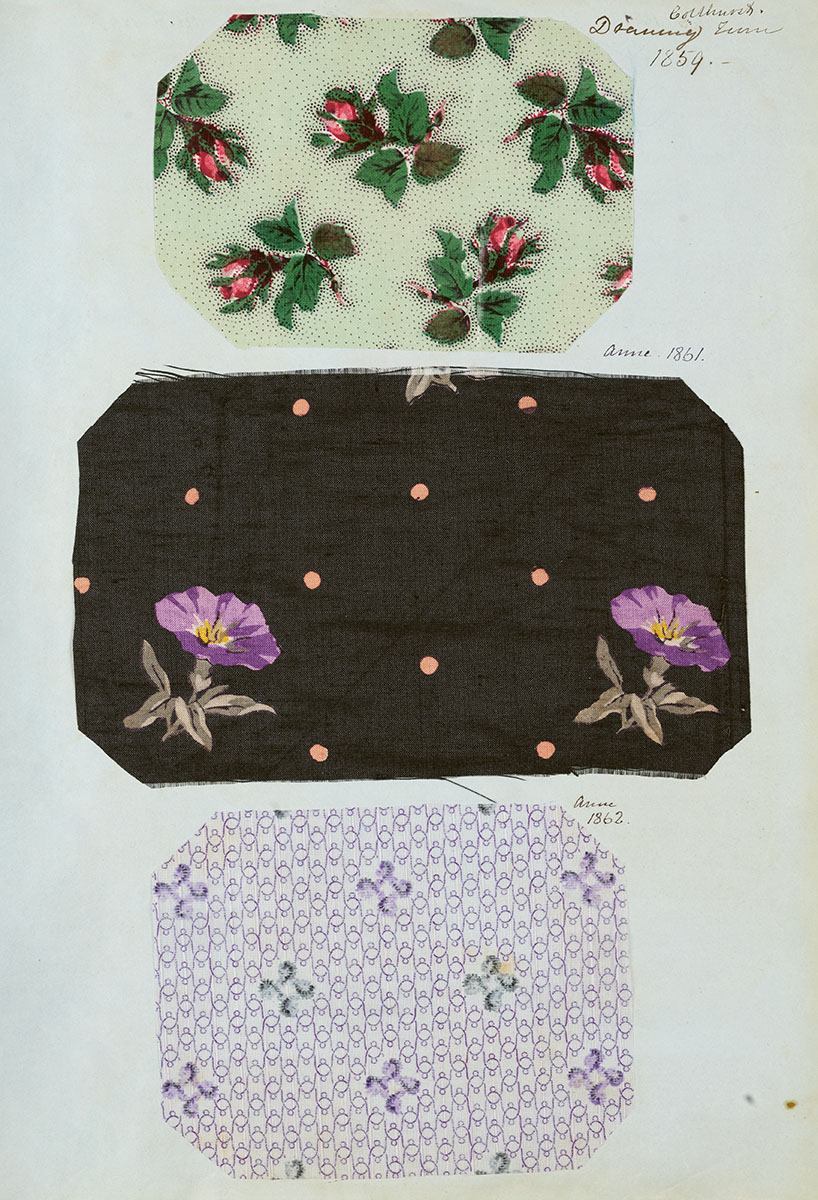
By the 1860s, Anne and Adam were living at Colthurst Hall near Clitheroe. Above two floral fragments, this wax cotton rose print was chosen for the drawing room at Colthurst.
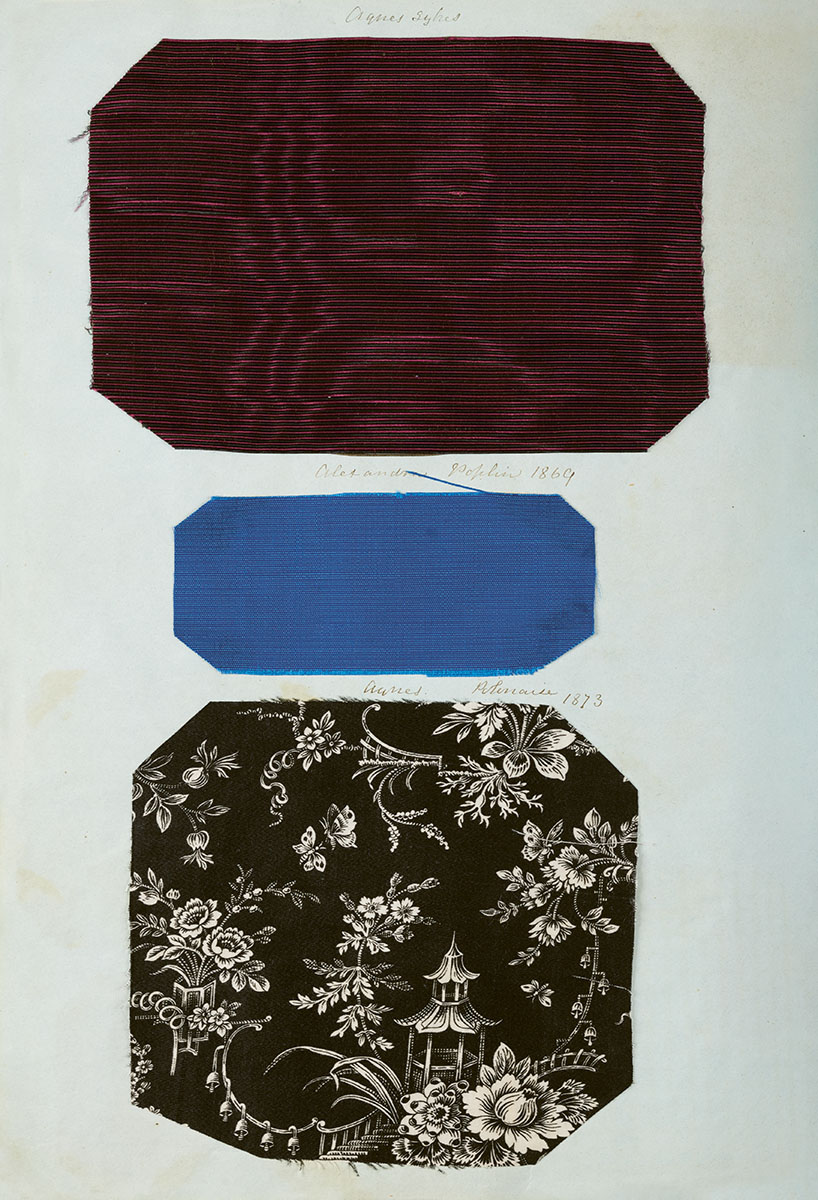
Anne’s placement of the swatches was less careful by the 1870s. The large brown and white floral sample here refers to Anne’s polonaise in 1873, one of the few times an actual garment is described.